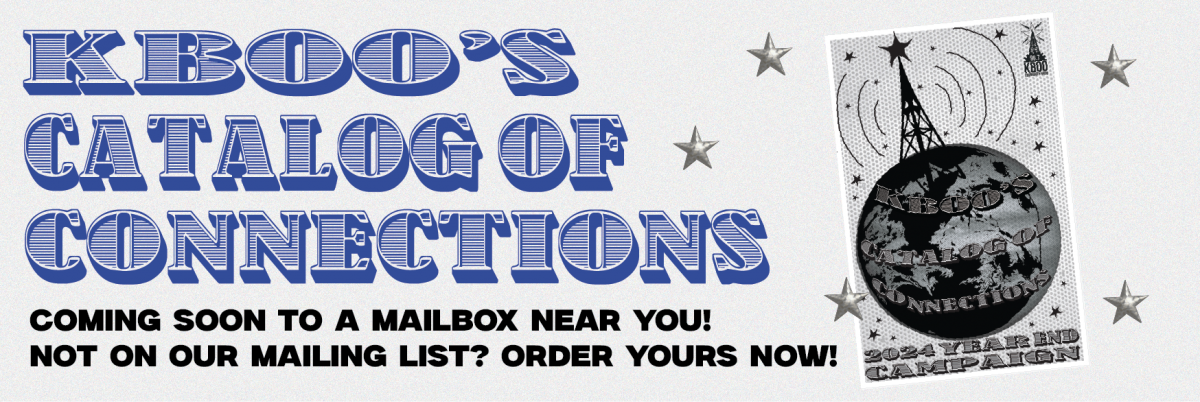If you only remember seven words, let them be
Cool, Dry, and Vertical! Include all dates!

Archival audiovisual materials deserve the specific best storage conditions that we can afford to give them. Archival repositories monitor specific temperature and humidity for each type of material: tape is stored at a different temperature than film or manuscripts. This is in part due to the chemical properties that the items are made of. If you are a past or present KBOO programmer, or an audio enthusiast with audio recordings at home, a quick assessment and improvement of your storage environment can improve the longevity of these valuable materials.
Storage Environment
- Remember that some of your physical formats may be on magnetic tape! Store items away from any magnetic materials.
- The best storage orientation for all magnetic tape formats (open reel audio, cassette tapes), optical disks (CDs, minidiscs), and digital audio tapes (DAT) is vertical like a book on a shelf, not laying flat. Stacking any tape format horizontally--or even allowing it to lean for too long--can compromise a tape pack and cause warping. Open reel audio containers should provide hub support for the reel in order to preserve the pack and prevent distortion.
- Store in a cool, dry space free or pest/rodent risks
Learn more about why your audio formats are special and how to care for them: https://psap.library.illinois.edu/format-id-guide/audiotape
Organization
- Dates! We love dates. Do your items have dates associated with them? Can you further describe the type of date as date the episode was broadcast, date the content was created, or date the content was recorded?
- Can you associate the items with a program or episode name?
- If you have items that related to each other, it is helpful to store them next to each other What role do you have with the items you have in your possession? I.e. host, interviewee, other creator or contributor. Try to document as much information as you can of institutional and personal name creators/contributors.




